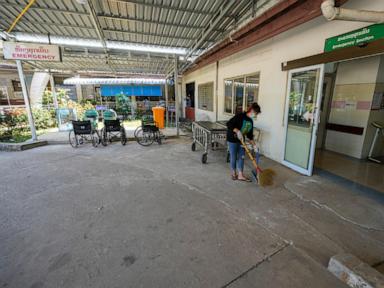
For people seeing a neurologist, their age, race, ethnicity and neighborhood may play a role in whether they do so in person or virtually, via telemedicine , according to a study published in the November 20, 2024, online issue of Neurology ® Clinical Practice , an official journal of the American Academy of Neurology. These results do not prove these factors increase or decrease a person's likelihood to choose telemedicine, they only show an association. There is an urgent need to develop health care options that can meet the increasing demand created by a shortage of neurologists and a rising number of individuals with neurological disease.
Telemedicine has become an integral part of health care delivery and has the potential to improve access to care. This virtual visit option saw a surge in usage during the pandemic, which appeared to have initially improved access across all groups. However, our study found that after the pandemic, disparities persisted.
" Marisa Patryce McGinley, DO, study author of Cleveland Clinic in Ohio and member of the American Academy of Neurology For the study, researchers evaluated data from 242,273 people. Telemedicine use was compared across three time frames: prepandemic, January 2019-February 2020; early pandemic, March-June 2020; and late pandemic, July 2020-July 2022, or after social distancing. Researchers used home addresses and a measure called the Area Deprivation Index to determine if each participant lived in an advantaged or disadvantaged neighborhood.
The index incorporates information on the socioeconomic conditions of each neighborhood and its residents, ranking neighborhoods based on 17 indicators including income, employment, education and housing quality. Higher scores on this index indicate more neighborhood disadvantage. The participants completed 752,174 visits during the study, of which 201,045, or 27%, were telemedicine visits and 551,129, or 73%, were in person.
Telemedicine use varied by race and ethnicity with white people using telemedicine instead of in-person visits more often, 28% of the time, while Black people used telemedicine 22% of the time, and Hispanic people 24% of the time. Of the total telemedicine visits, 8,879 were prepandemic, 39,624 were during the early pandemic and 152,542 in late pandemic. Related Stories $1.
9 million grant aims to improve infant safety against necrotizing enterocolitis FDA strengthens AI regulation to ensure patient safety and innovation in healthcare Telemedicine and low-carb diet slashes diabetes meds and drives lasting remission Researchers found that in the late pandemic time frame, Black people were 16% less likely to use telemedicine than white people and Hispanic people were 30% less likely to use telemedicine than non-Hispanic people. During the same time frame, they also found that people who were from a neighborhood with a higher disadvantage were less likely to use telemedicine. Those in the most disadvantaged neighborhoods were 35% less likely to use telemedicine than those in the least disadvantaged neighborhoods.
"Equal usage of telemedicine by people in rural and urban areas in this study suggests the potential of telemedicine to improve access disparities for rural patients," McGinley said. "However, limited access to high-speed internet, which is often tied to disparities, has also been shown to decrease the likelihood of using telemedicine. Future studies are needed to develop equitable health care options and determine the impact of telemedicine on improving access to neurological care.
" A limitation of the study was that only one health system was studied, so it is unknown whether similar disparities exist at other institutions. The study was supported by the National Institutes of Health and Genentech. American Academy of Neurology McGinley, M.
P., et al. (2024) Disparities in Utilization of Outpatient Telemedicine for Neurologic Care .
Neurology ® Clinical Practice . doi.org/10.
1212/CPJ.0000000000200407 ..














